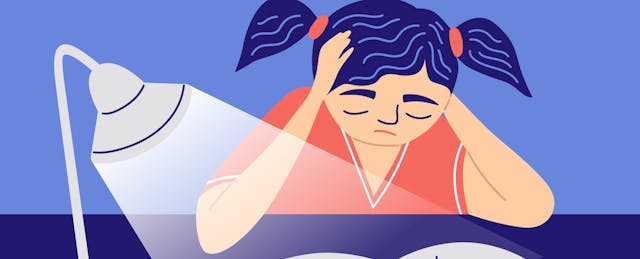As the new school year gets into full swing, educators are likely to shift their focus from worrying about the depth of learning loss for students as a group, and begin zeroing in on where individual students are at. Nevertheless, looking at the differences in learning lost between two different groups of students, one from Sweden and one from England, may shed light on how best to help students with dyslexia in the United States move forward.
Sweden and England had quite different approaches to education during the pandemic. Sweden, for the most part, did not close its schools. England, on the other hand, responded to the pandemic much as the U.S. did, closing school buildings and pivoting to remote learning.
When researchers at my company, Lexplore, compared the fall 2019 and spring 2021 assessment results of more than 57,000 Swedish students in grades 2 to 6, they found that students in 2021 were, on average, 10 percentile points, or seven to eight months, behind the 2019 students in reading ability. The drop affected both struggling and proficient readers, and was most pronounced among middle school students.
In England, students were only behind an average of 5 percentile points, or about four months. In England, however, the drop was more pronounced among struggling readers.
What This Means
The most likely explanation for these discrepancies is that remote learning actually led to more reading for many students. Strong readers continued to practice and improve, but struggling readers were less likely to practice and so tended to fall further behind. We see a similar pattern each year over the summer: students who are struggling experience a deeper summer slide than their peers.
The good news is that the strategies to help these students get back on track are no different than in any other year, if a bit more critical.
Early Assessment
First, it’s essential that teachers get an accurate understanding of each student’s reading level as early as possible. If struggling students are asked to read and practice at a level that is too challenging, they’re simply being set up for failure. It won’t help them progress, but it will frustrate them and make them want to spend even less time reading. Teachers may need to revisit foundational reading skills and determine specific skill deficits that require remediation. It is critical that all books provided to the student for reading practice align with the scope and sequence of the skills being taught.
Teachers may also need to consider audiobooks or other assistive technologies to help students who are behind in reading, especially in later grades, acquire the vocabulary and content knowledge they need to progress in other subjects.
With wider gaps between proficient readers and those who are struggling, teachers may also find it helpful to use more group learning to have students with similar abilities work together on texts and exercises targeted at their abilities.
Struggling readers, especially those with dyslexia, will catch up and make meaningful gains if they receive intervention at the appropriate level. They’ll catch up even faster if a school or district is fortunate enough to have a teacher trained in the Orton-Gillingham method, which is widely used with students with dyslexia.
Practice, Practice, Practice
If lack of practice explains at least part of the widening gap between proficient readers and struggling readers throughout the pandemic, then more practice is the clear solution to closing that gap. The problem, of course, is that people don’t tend to enjoy activities they struggle with, and students who find reading difficult are no different.
This highlights, again, the importance of assessment. Understanding where students’ abilities are and helping them find appropriate texts they’re excited to read is critical. Material targeted to their ability will allow them to feel like they’re making gains, and aligning that material with their interests will help motivate them to practice. For example, it is critical to provide Hi/Lo books with high interest and low readability levels to older students (grades 3 and above) for reading practice and supplement them with audiobooks to increase vocabulary. The goal is the mastery of a reading skill while keeping that student engaged.
Parents also have a role to play here. Since struggling readers also tend to be reluctant readers, teachers may want to reach out to parents and enlist their help in motivating their children to read more at home.
The challenges of this year may feel daunting, but even though teachers may have more ground to cover than in a typical year, the fundamental strategies are the same. We must find out where each student is and ensure they have plenty of opportunities for appropriately matched practice.


